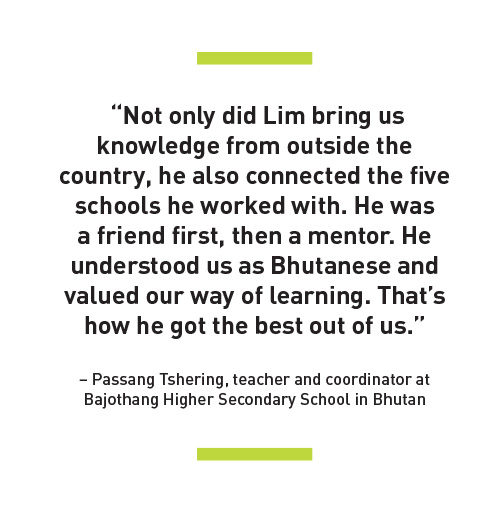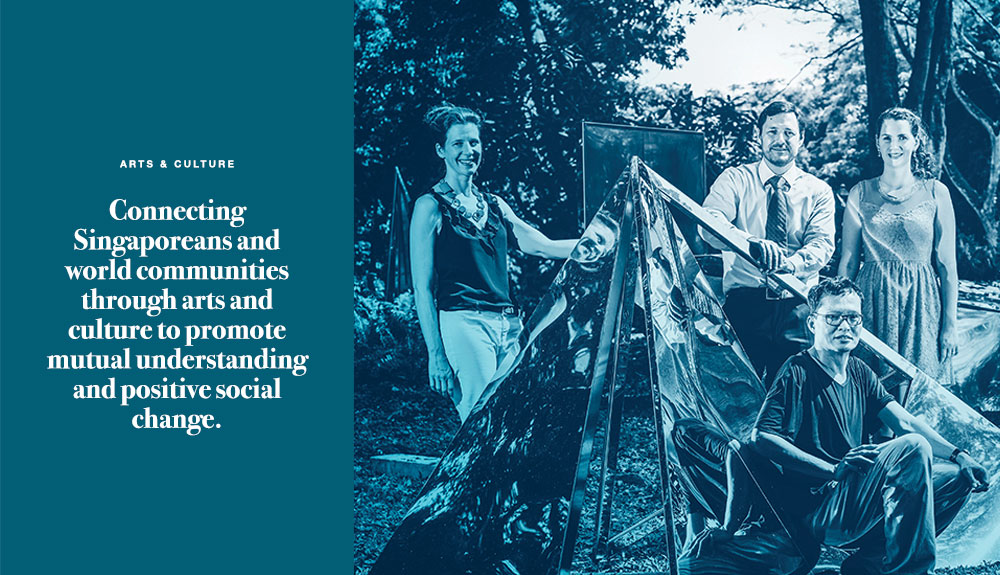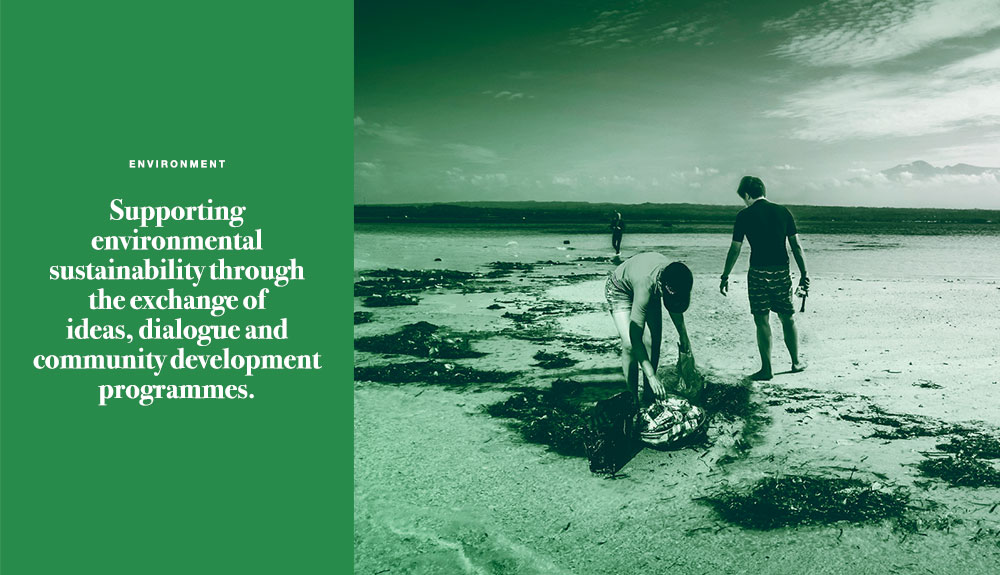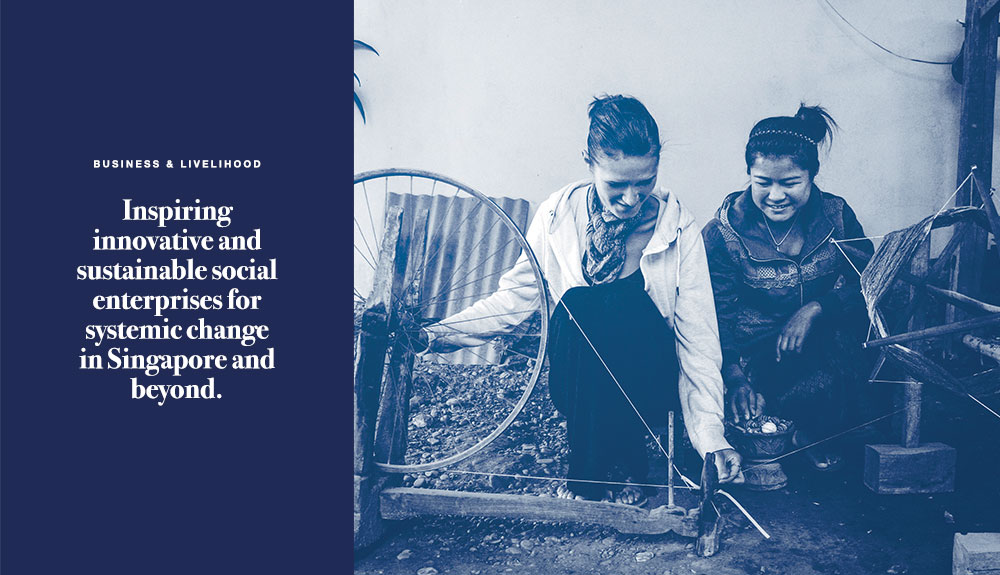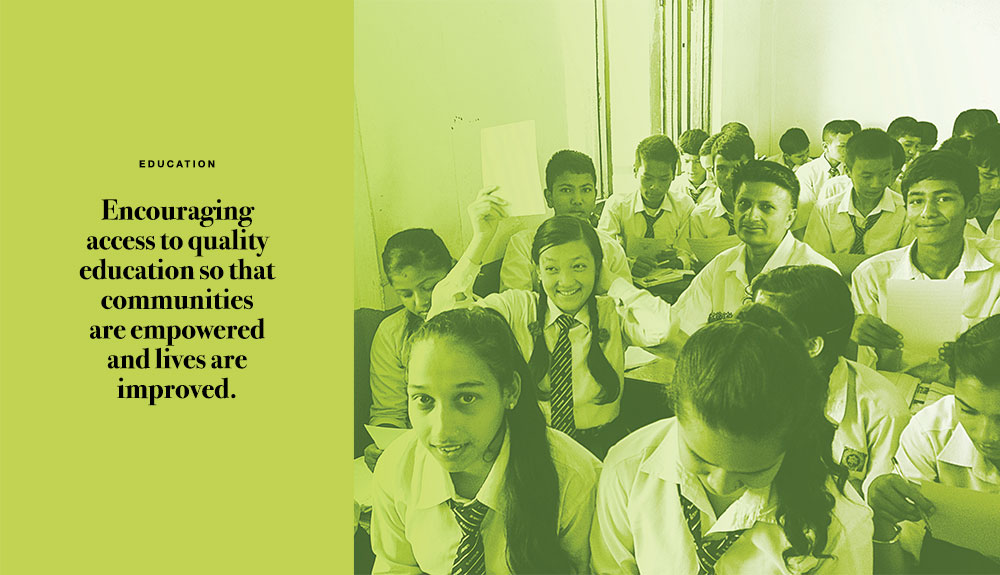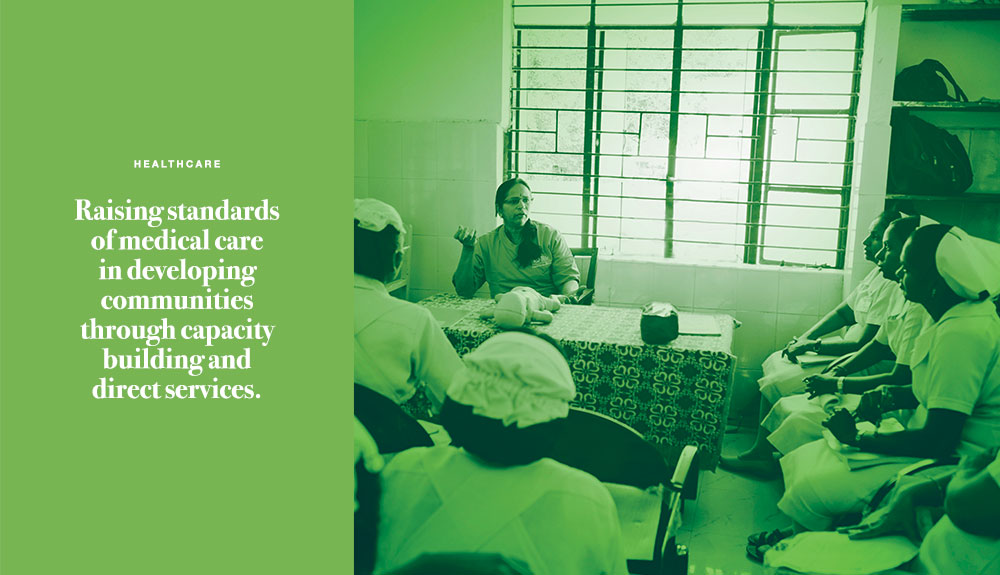
1 What did your work in Bhutan involve?
I trained the Bhutanese teachers how to liven up lessons by incorporating critical thinking and IT. In the beginning, I had observed that most of them were still using the traditional, chalk-and-talk technique of teaching; the only use of IT was in the form of flashing Powerpoint presentations on screen. So I shared with them different ways to elicit responses from the students, make learning more experiential and empower youth to be more involved in their own learning.
For example, while teaching a poem, instead of simply explaining to the students what it means, we assigned different verses to different groups to interpret and then asked each group to present its interpretation to the class. A physics lesson could involve an online questionnaire for students to complete at their own pace.
I planned and designed lessons with teachers from five schools, all located in different districts – Thimphu, Paro, Chukha, Wangdue Phodrang and Punakha. I spent a week at each school, then repeated the routine. I would travel by bus to one school on a Monday and return to the capital Thimphu on the weekend, to prepare for next week’s lessons at another school.
2 How has technology made an impact on the culture of Bhutan, its people, their mindsets and perceptions?
Bhutan’s ban on the Internet was lifted only in 1999. Since then, people have embraced the influx of technology in their daily lives. You can see monks in their maroon robes using their laptops and smartphones. The youth are also becoming more influenced by the West. Many Bhutanese are active on social media, but not many are using IT as a teaching tool in the classrooms yet. This is slowly changing. Bhutan has been closed off to the rest of the world until recently. This new influx of information and skills will greatly have an impact on Bhutan’s development and its people’s welfare.
3Were there any cultural differences you experienced in working with the teachers in Bhutan?
Culturally, I felt right at home because we are all Asians and have similar values and behaviour, such as respect for our family and elders. We bonded very quickly because of these shared values. What helped was that we all spoke English – language wasn’t a problem.
Some teachers had reservations that the new techniques would not be as effective as the old top-down approach to teaching. They were also worried that devising new teaching plans would add to their existing workload.
But with detailed lesson planning, along with our friendship, their reservations were put to rest. It also helped that the Bhutanese teachers were very cooperative and nice, enthusiastic people.
4 What was most satisfying working with the Bhutanese, and what inspired you to return to Bhutan on your own initiative time and again?
The best outcome from the project was the friendships forged with the Bhutanese community. During my time there, I truly fell in love with Bhutan and its people. The family who owned the lodge I stayed at have become very close friends. The time I was there, I helped them with waiting tables and dishwashing at the cafe they owned, and they even entrusted me with the password to the cash register when they were shorthanded.
My neighbour was a monk and drug counsellor who helped youth at risk. He, too, is someone I’ve developed a close friendship with and with whom I’m still in touch. He was very inspiring and I consider him a teacher to me. I am planning an upcoming trip for students from a university in Singapore.
I am thinking of ways to get Bhutanese youth to vote for their favourite business proposals put up by the Singapore students and possibly put them into action. I also struck up a great rapport with some of the teachers. When I left Bhutan in 2011, one of them said he felt that a brother was leaving. In 2012, I organised a trip back to Bhutan for 11 Singapore teachers. We spent about a week touring the country, stopping at schools to conduct teaching workshops. The Singapore team made friends with the locals and the Bhutanese were appreciative.
In September that same year, I took another group of about 40 students from a top Singapore school on a service learning trip there. They spent a week painting the walls of a public hospital, visiting a disability centre, conducting lessons for primary school students and working with a local non-governmental organisation to visit underprivileged kids. What inspires me to return time and again is being able to build enduring friendships while contributing to a worthwhile cause.
5 What has been the social impact from this project?
I trained about 25 to 30 teachers from five schools, who then went on to conduct training demonstrations for other teachers. In all, at least 140 teachers have benefited from this programme. These teachers are now able to use IT and critical thinking techniques in their lessons. I found out later that some of them were promoted and joined the education ministry’s headquarters, enabling them to hopefully make a greater impact on policy and the education landscape in Bhutan.
6 What have you learnt from your Bhutanese friends?
Apart from the lifelong friendships, they’ve helped me to look at things from different perspectives. Singaporeans sometimes think there is only one correct way of doing things. But I’ve learnt from the Bhutanese to be more flexible and find different ways of solving problems. They were also very encouraging. When it was time for me to return to Singapore, a whole entourage sent me off. The Bhutanese are generally very open with their feelings, and many of them even had tears in their eyes. It made me feel like I was leaving one home for another.
7What’s next for you?
I’m toying with the idea of starting a social enterprise in Bhutan to employ some of the at-risk youth that I’ve got to know, and give them a chance to work and learn and earn a living.

